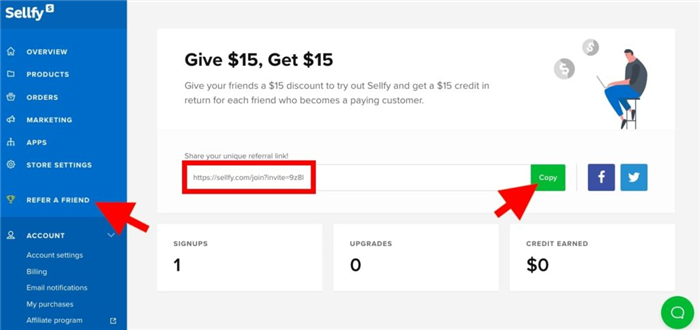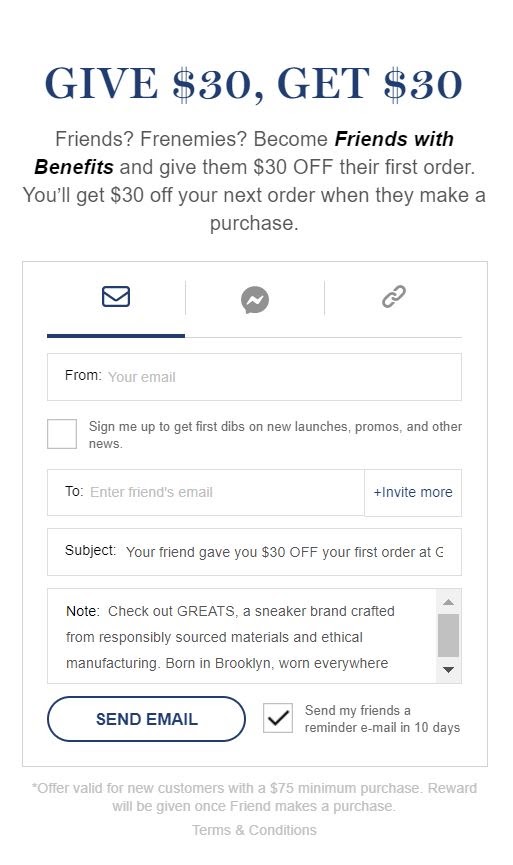Contents
Implementing a Referral Program to Boost Sales
Referral programs have proven to be an effective tool for businesses looking to increase sales. By leveraging the power of customer recommendations, companies can tap into a cost-effective and highly targeted marketing strategy. However, it’s crucial to understand the key principles behind a successful referral program in order to maximize its potential.
Here are some essential steps to consider when implementing a referral program:
1. Understand your target audience: Before launching a referral program, it’s important to have a deep understanding of your target audience. This will help you design the program in a way that resonates with them and motivates them to refer your product or service to others.
2. Define clear program incentives: To encourage customers to refer others to your business, it’s vital to offer attractive incentives. These can take the form of discounts, freebies, or exclusive access to special offers. The incentives should be valuable enough to motivate customers to actively participate in the program.
3. Make it easy for customers to refer: A successful referral program should be simple and convenient for customers to use. Implementing user-friendly referral tools, such as personalized referral links or easy-to-share social media posts, can greatly enhance the user experience and increase the chances of successful referrals.
4. Track and measure results: Monitoring the performance of your referral program is crucial to assess its effectiveness. By tracking key metrics such as the number of referrals, conversion rates, and revenue generated, you can identify areas for improvement and make data-driven decisions to optimize your program.
5. Foster a sense of community: Building a strong community around your brand can greatly enhance the success of your referral program. Encourage customers to engage with one another and share their experiences through forums, social media groups, or events. This not only creates a supportive and enthusiastic customer base but also increases the likelihood of referrals.
By following these steps and implementing a well-designed referral program, businesses can effectively harness the power of word-of-mouth marketing and drive significant growth in sales.

Referral programs are a powerful marketing tool for driving sales. Did you know that a consumer is up to 50x more likely to buy a product if it’s recommended by family or friends? That’s why you should count on loyal customers to act as brand advocates.
People are more likely to trust their network, so referrals are an effective means of gaining new customers. Opinions of customers carry more weight than a sponsored ad.
So, how can you use a referral program to boost sales? In this guide, you’ll learn the basics and tips for running your own referral program.
Why run a referral program?
Referral programs incentivize brand advocates to promote your brand.
Brand advocates get a referral code to share. If a friend uses the code to make their first purchase, this counts as a successful referral. The referrer is then rewarded, which can be in the form of a discount, freebie, or monetary compensation.
Of course, referrals can also happen organically without a referral program. However, a referral program creates real motivation to spread the word about your brand.
Ultimately, this leads to more referrals, new customers, and rewards for brand advocates. It’s a win-win-win situation!
For example, WoolOver’s referral program gives brand advocates 20% off when their friends make their first order. The referred friend also gets a 20% off discount to motivate them to make their first purchase.

Referral marketing relies on word of mouth and is a powerful tactic for organic business growth. When choosing an eCommerce store, restaurant, or hotel, we often rely on recommendations from peers or social media posts. Sharing positive experiences is a natural part of our lives, and we freely share our knowledge to guide others. Conversely, when we’re unsure, we seek referrals for validation. Word-of-mouth is a prominent and impactful sales strategy that is more relevant and trustworthy than sponsored ads.
Referral marketing not only impacts profits but also branding efforts. Here are some of its main benefits:
1. Access to brand ambassadors: While quality content like blog posts and social media updates is important, having brand ambassadors who vouch for your business is equally valuable. Referral programs enable you to have loyal advocates who introduce your company and promote your products because they genuinely love what you do.
2. Improved reputation: Referral marketing allows you to share your brand story and enhance overall reputation. Consumers trust recommendations from friends more than online ads. Brand advocates are trustworthy and authentic sources of information about your business. They promote brands they genuinely love to ensure positive consumer experiences for their friends and family.
3. Loyal customers: Acquiring new customers is time-consuming and costly, but a referral program simplifies the process. Brand advocates can easily convince their loved ones to try the products they love. For example, Sellfy offers its loyal customers referral links to share, giving new customers a discount and existing customers credits toward their next subscription payment.

Not only does it help satisfied customers get bonuses, but it also makes referred consumers more loyal. Referred customers spend 13.2% more on average than regular customers, indicating that they establish a strong relationship with your brand when their friends come on board.
How to run a referral program effectively
1. Focus on your product and services
To get started, have a great product that people will want to talk about and share. This leads to a great customer experience, repeat purchases, and referrals.
2. Choose an enticing incentive
The next step is to choose an incentive. Will you reward customers with cash, freebies, discounts, or exclusive products? Pick cost-effective prizes that can be distributed en masse to customers without sacrificing profits.
For example, Greats’ "Give $30, Get $30" referral program allows referred friends to get $30 off their first order, while brand advocates receive the same reward on their next purchase.

Promote your program by spreading the word to your current customers through your website, emails, and social media posts. Consider using chatbots to inform your site visitors about your program in an interactive and fun way. You can automate the sign-up process and make it seamless for both you and your participants.
Track your progress by monitoring and analyzing data through analytical tools. A referral program allows you to determine whether customers were referred by their friends or brought in through your marketing efforts. It also helps you keep track of brand advocates and create campaigns to boost customer engagement and retention.
Ready to launch your referral program? It can have a big impact on your sales. Many consumers rely on referrals from friends and family, which is why launching a referral program can help you grow your customer base and reward your brand advocates.
Hello!
I’m Andrew Brooks, a seasoned finance consultant from the USA and the mind behind phonenumber247.com.
My career is built on a foundation of helping individuals and businesses thrive financially in an ever-changing economic landscape. At phonenumber247.com, my aim is to demystify the complex world of finance, providing clear, actionable advice that can help you navigate your financial journey with confidence. Whether it’s personal finance management, investment strategies, or understanding the nuances of market dynamics, I’m here to share insights and tools that can propel you towards your financial goals.
Welcome to my digital space, where every piece of advice is a step closer to financial clarity and success!
